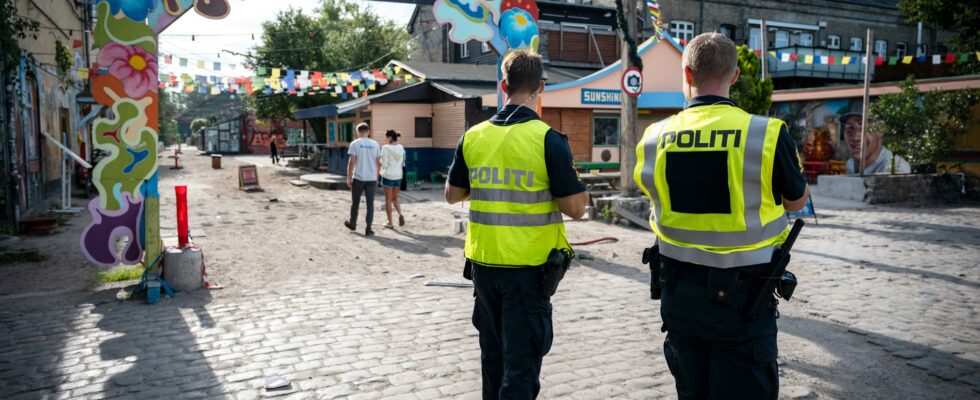unsaveSave
Police officers patrol past the closed Pusher Street in Christiania. At the beginning of April 2024, the last hash shops on Pusher Street were demolished and the paving stones were dug up as a symbolic marking that new times await.
1 / 5 Photo: Johan Nilsson/TT
Christiania has become calmer and more peaceful since the disappearance of organized, large-scale hashish sales and the introduction of shock fines for those who take a joint.
But these are grim times for the services in the old haven of Copenhagen.
Christiania has changed since Pusher Street was torn up brick by brick in the pouring spring sun on April 6.
The police’s statistics speak for themselves: Zero reported violent crimes in Christiania during three summer months (May–July). The area is no longer a relevant target for the violent acts of the criminal gangs.
– It is good that the organized hashish trade is gone, but in my world it is at least as good that the violence is markedly less, says Simon Hansen, who leads the police’s Christiania operation.
“Is so calm”
The hashish booths, which over the years have been demolished by the police many times but always resurfaced, seem to be gone for good this time. And with the booths, the often aggressive gangs with a large capital of violence and connections to criminal gangs also disappeared.
– It’s so peaceful, it’s like when you were a child again, says Carlo Strange, who grew up in Christiania.
– The criminals are gone. That attitude: “Move here I come” – it is completely gone.
At the same time, there is a slight sense of an identity crisis in Christiania. It is not only unpleasant squatters who have disappeared, but also those who came here to smoke hash at one of the area’s restaurants.
Powerful race
Anne Møller, who runs the cafe Abegrotten near the old Pusher Street, is one of those who testify to a sharp rise in turnover. The number of visitors from other parts of Copenhagen had already started to decrease due to violence and insecurity around the hashish stalls, she says.
But now, when anyone caught with hashish in the area gets a double fine and also risks prison if caught a second time, only the tourists come here.
– The problem today is that many tourists come here, look around and take pictures and then they move on. It would have been nice if they had also bought something, says Anne Møller.
Now a new Christiania will take shape. The municipality and the state contribute 30 million Danish kroner and two change leaders have been hired, renovations are planned and the hope is for a new flora of small businesses and cultural activities.
– Our goal is to create new life and more life in the area, says project employee Mikkel Holst.
There is a fear that Christiania will lose its unique character, but the danger is not imminent, says Mikkel Holst.
– Christiania does it in its own way and you don’t change that just by building a little here.
FACTSChristiania
The sanctuary Christiania was born in 1971 when squatters settled in buildings left by the defense forces in the Christianshavn district of Copenhagen.
The first major step towards normalization was taken when the ownership of land and buildings was regulated and an agreement was established with the Danish state in 2012.
The area is largely owned by the Funden Fristaden Christiania. Residents pay rent for their accommodation.
Decisions about how the area should be managed and developed are made by consensus at joint meetings.
Read more
